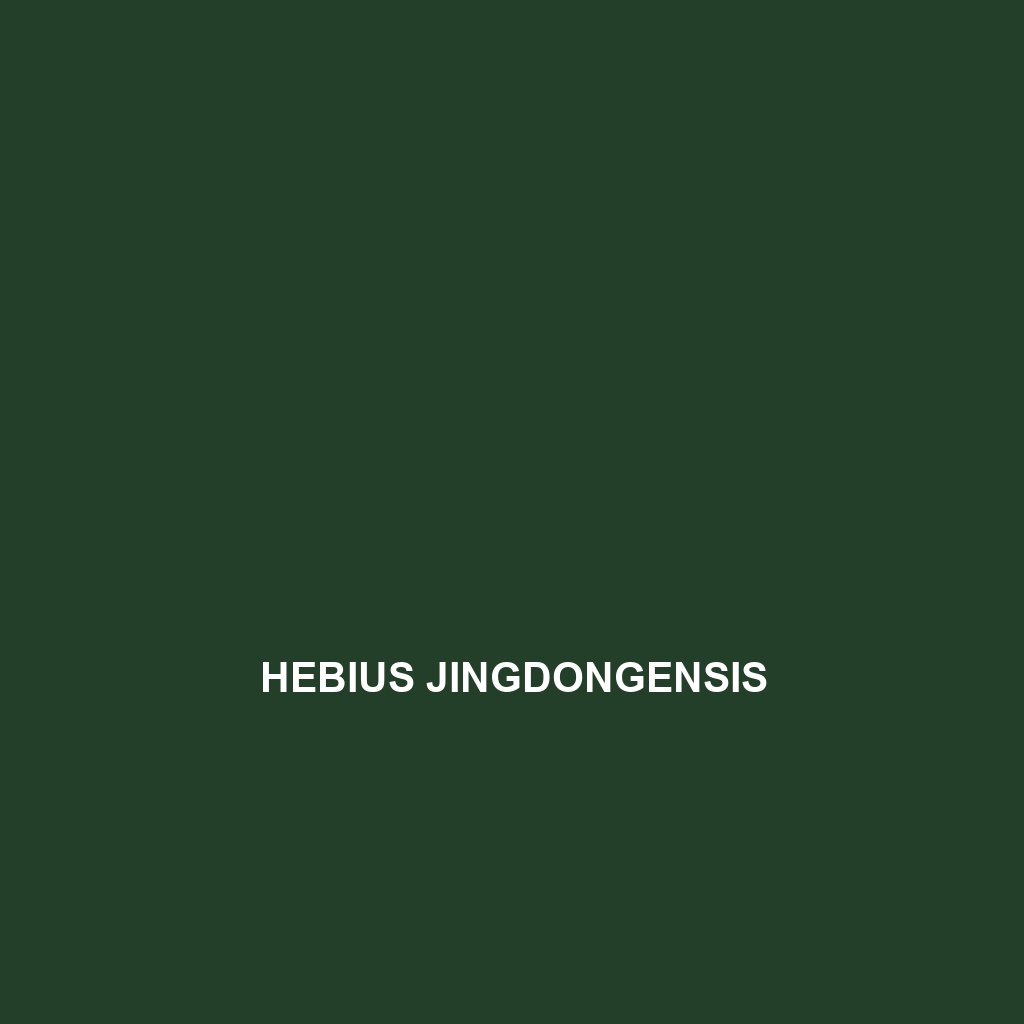Common Name
Hebius jingdongensis
Scientific Name
Hebius jingdongensis
Habitat
Hebius jingdongensis is primarily found in the montane forests of Southeast Asia, particularly within the lush, evergreen habitats of China’s Yunnan province. These snakes thrive in temperate forests where the climate is humid and the environment is rich in biodiversity. The species is often spotted near mountain streams and rocky outcrops, adapting well to the complex terrain. The temperatures in these regions typically fluctuate but remain moderate, supporting the diversity of flora and fauna essential for the survival of Hebius jingdongensis. The presence of dense underbrush and leaf litter provides adequate cover and hunting grounds, making these vibrant ecosystems crucial for the species’ survival.
Physical Characteristics
Hebius jingdongensis is characterized by its slender, elongated body, reaching lengths of approximately 60 to 90 centimeters. The coloration varies, commonly featuring a striking pattern of dark and light bands that serve as camouflage against the forest floor. Its dorsal surface is predominantly brown to green, allowing it to blend seamlessly into the leafy environment. This species also possesses smooth, shiny scales and a distinct head that is slightly wider than its neck, contributing to its unique appearance. Notably, Hebius jingdongensis can be identified by its large, round eyes, which are well-adapted for its semi-nocturnal habits.
Behavior
The behavior of Hebius jingdongensis is characterized by its primarily nocturnal lifestyle, being most active during the night when it forages for food. During the day, these snakes typically remain hidden under leaves or rocks, reducing their visibility to predators and potential threats. Social interactions are generally limited; however, during the mating season, males may engage in elaborate displays of courtship, including wrestling and body posturing. These unique mating rituals ensure that the strongest and most viable partners reproduce, thereby contributing to the survival of the species.
Diet
Hebius jingdongensis is primarily a carnivore, with a diet consisting mainly of small mammals, birds, and various insects. Its hunting strategy includes ambushing unsuspecting prey, utilizing its excellent camouflage to remain undetected. The species has also been recorded feeding on amphibians, indicating a varied diet that contributes to its adaptability in different environmental conditions. The snake’s ability to consume prey larger than its head is facilitated by its highly flexible jaw, a characteristic common among many snake species.
Reproduction
The reproductive cycle of Hebius jingdongensis typically commences in the spring months, with a mating season that peaks just after the rainy season. Males engage in competitive displays to attract females, with successful pairings often leading to oviposition in late summer. The gestation period lasts approximately two to three months, with females laying clutches of 4 to 15 eggs in well-hidden, moist substrate to enhance survival chances. Parental care is minimal; however, females exhibit protective behaviors during the incubation period, remaining nearby to deter potential threats.
Conservation Status
As of the latest assessments, Hebius jingdongensis is classified as vulnerable due to habitat loss and degradation primarily caused by deforestation and urban expansion in Southeast Asia. Conservation efforts are underway to preserve its natural habitat, with many organizations focusing on reforestation projects and the establishment of protected areas. The challenges persist, as poaching and the illegal pet trade pose additional threats to this species’ population stability. Increased awareness and protective legislation are crucial for the future survival of Hebius jingdongensis.
Interesting Facts
One of the remarkable adaptations of Hebius jingdongensis is its ability to change its coloration slightly in response to environmental conditions, helping it blend even more effectively with its surroundings. Additionally, this species typically emits a musky scent when threatened, which may deter predators. Further intriguing is its relatively unknown capability of thriving in varying altitudes, showcasing a fascinating adaptability that has yet to be fully researched.
Role in Ecosystem
Hebius jingdongensis plays a crucial role in its ecosystem as both a predator and prey. As a predator, it helps control populations of small mammals and insects, thereby contributing to the ecological balance. This species also serves as prey for larger predators, which further highlights its importance in the food web. Through its feeding habits, Hebius jingdongensis inadvertently aids in seed dispersal, promoting plant diversity within its habitat. By maintaining ecological dynamics, this snake plays a vital role in ensuring a healthy and functioning ecosystem.
